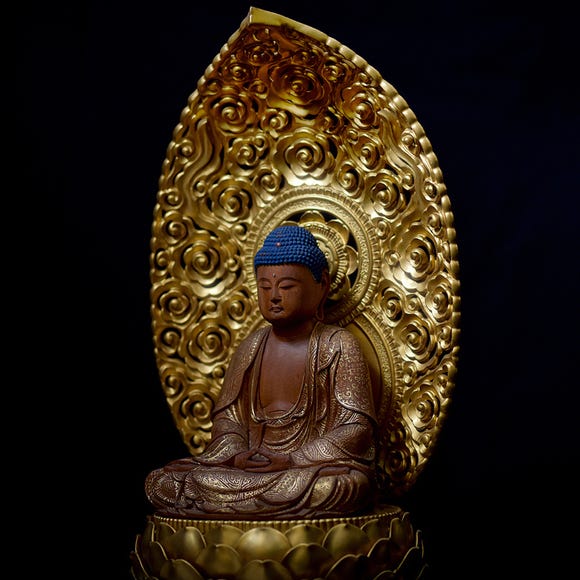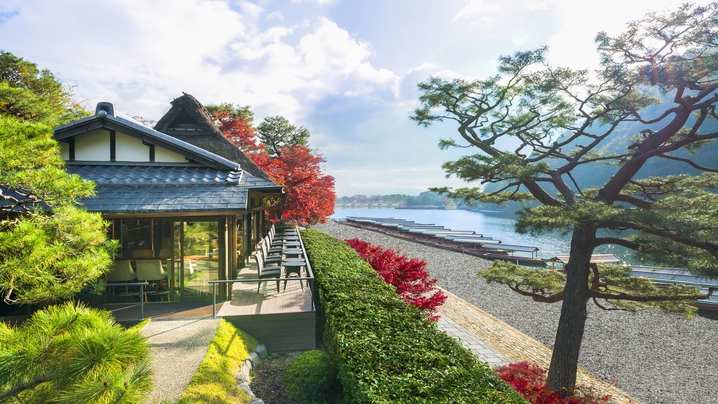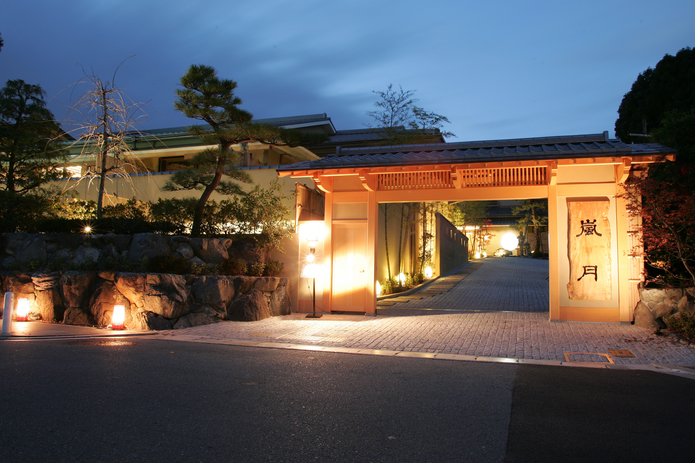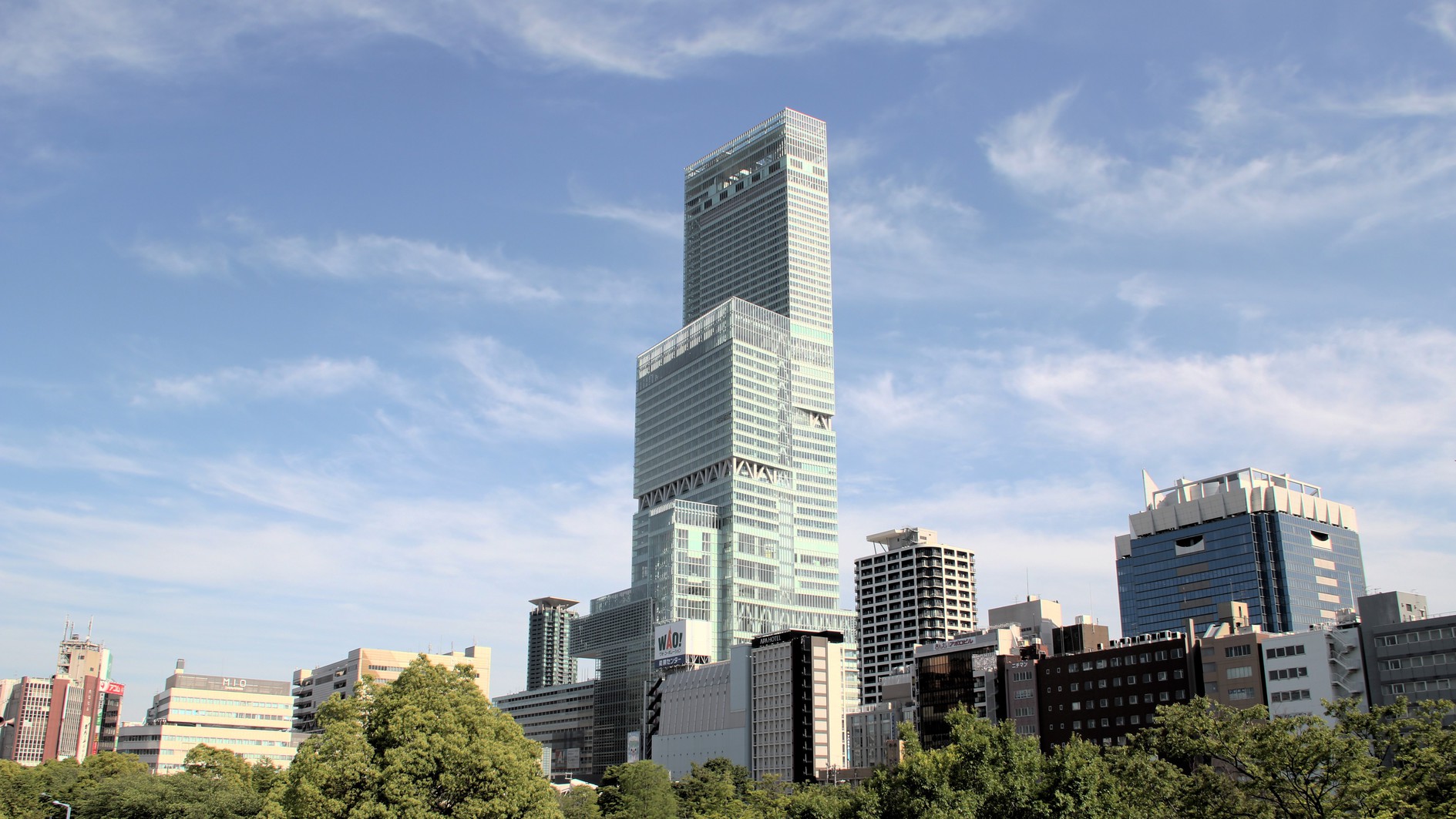
As the autumn leaves fade, Kyoto welcomes a winter filled with festive spirit: romantic Christmas lights, joyful New Year shrine visits, and cozy Valentine’s moments add warmth to the chilly season. Although recent winters have been milder, Kyoto still feels colder than nearby Osaka or Kobe, with a dry climate that makes dressing warmly especially important.
With the right layers and care for warmth and moisture, winter in Kyoto can be incredibly fun! Here’s a detailed guide from LIVE JAPAN Kansai editors on what to expect in Kyoto’s December, January, and February weather, what to wear, and handy winter items to bring; perfect if you’re planning to visit for New Year’s or Lunar New Year.
Photo: Courtesy of Wakey
*This article may contain affiliate links or coupons. Recommended facilities, shops, and products are carefully selected by our editorial team.
- Table of Contents
-
- What’s the Weather Like in Kyoto Throughout the Year?
- What Is Kyoto’s Winter Weather Like (December–February) and How Does It Differ from Southeast Asia?
- Kyoto Weather in December: Cold to the Bone?
- What to Wear in Kyoto in December: The Latest Winter Outfit Guide
- Editor’s Picks: Recommended Things to Do and See in Kyoto This December
- Kyoto Weather in January: Temperatures on a Slide!
- What to Wear in Kyoto in January: The Latest Winter Outfit Guide
- Editor’s Picks: Recommended Events and Attractions in Kyoto This January
- Kyoto Weather in February: Does It Snow?
- What to Wear in Kyoto in February: The Latest Winter Outfit Guide
- Editor’s Picks: Recommended Events and Attractions in Kyoto This February
- Get Ready for Your Kyoto Trip: Stay Warm and Enjoy Winter to the Fullest!
What’s the Weather Like in Kyoto Throughout the Year?

Kyoto Prefecture stretches north to south across the Tamba Mountains, creating a clear contrast between its northern and southern climates. Cities in the north such as Fukuchiyama, Maizuru, and Miyazu (home to Amanohashidate) have a Sea of Japan climate with cloudy skies most of the year, short summers, early autumns, and cold winters that often drop below freezing. The Tango Peninsula in particular sees frequent snowfall and high humidity.
In contrast, southern Kyoto, where most sightseeing spots like Kiyomizu-dera and Kinkaku-ji are located, lies in a basin surrounded by mountains. This geography brings hot summers, cold winters, and large temperature differences between day and night. Because the land rises toward the mountains, temperatures vary noticeably even within the city. Locals often note that the top of To-ji Temple’s five-story pagoda (54.8 m) and Kitayama-dori in the north are at similar elevations despite being only 8.5 km apart, resulting in cooler conditions in the north.
What Is Kyoto’s Winter Weather Like (December–February) and How Does It Differ from Southeast Asia?

Winter in Kyoto can feel much colder than travelers from Southeast Asia might expect. The perceived temperature is often lower than the actual reading, and the dry air makes the chill even more intense. While daytime highs are similar to those in nearby Osaka, Kyoto’s lows are typically about 2°C (3.6°F) lower because of its basin geography. The large gap between day and night temperatures, combined with nighttime radiative cooling, causes the temperature to drop sharply from dusk until early morning.
Since many winter attractions such as evening illuminations and New Year shrine visits take place after dark, visitors should be ready for sudden temperature changes. Carrying essentials like pain relievers, stomach medicine, or cold remedies can help you stay comfortable throughout your trip.
Kyoto Weather in December: Cold to the Bone?

Based on data from southern Kyoto in 2024, the average temperature in December was 7°C (45°F), with average highs around 11.8°C (53°F) and lows near 3.5°C (38°F). Thanks to recent mild winters, the “cold to the bone” feeling is slightly less intense during the day. However, as the year draws to a close, the temperature difference between day and night can exceed 8°C (14°F), so keeping warm should be a top priority when planning your trip. The good news is that December sees very little rain, and clear blue skies are common.
- Temperature
- 7.0°C (45°F)
- High
- 11.8°C (53°F)
- Low
- 3.5°C (38°F)
- Precipitation
- 7.5 mm (0.3 in)
- Humidity
- 67%
In northern Kyoto near the Sea of Japan, December is often cloudy with strong winds and occasional rain mixed with snow. The perceived temperature tends to feel colder than the actual reading, and even on warmer days, the mercury drops quickly after sunset. Warm clothing is essential to stay comfortable. By late December, the city’s scenery transforms completely, marking the true arrival of winter.
- Temperature
- 6.4°C (43°F)
- High
- 10.8°C (51°F)
- Low
- 3.0°C (37°F)
- Precipitation
- 197.5 mm (7.8 in)
- Humidity
- 79%
What to Wear in Kyoto in December: The Latest Winter Outfit Guide

By December, you’ll need a thick wool coat or one with a warm lining. If you’re sensitive to the cold, wear heat-retaining innerwear or use disposable body warmers, and add a scarf or gloves when heading outdoors. For women, wool skirts paired with thick socks and ankle boots are ideal. Since northern Kyoto is colder than the south, it’s best to prepare for true winter conditions early.
- Tops
- Heat-retaining innerwear, sweaters, long-sleeve shirts, jackets, coats, or down jackets
- Bottoms
- Lined pants or wool skirts with thick tights
- Shoes
- Sneakers or ankle boots
- Accessories
- Scarf, gloves, knit hat, and disposable body warmers
Editor’s Picks: Recommended Things to Do and See in Kyoto This December
From mid-February to late December, the Arashiyama to Kitano-Sagano area is illuminated for the Hanatouro Light Festival. Once the sun sets, the paths glow with dreamy lights, creating a truly magical atmosphere. Start from Hankyu Arashiyama Station and stroll toward Togetsukyo Bridge and Sagano to enjoy this once-a-year spectacle. Nearby temples and shrines also open for special nighttime visits, offering a peaceful glimpse into the quiet beauty of the ancient capital.
-

-
Address
Sagatenryuji Suenobaba Town, Ukyo Ward, Kyoto City, Kyoto Prefecture, 616-8385
View Map -
Nearest Station
Arashiyama Station (Keifuku Dentetsu-arashiyama Line)
3 minutes on foot
- Phone Number 075-411-9990
-
Address
Sagatenryuji Suenobaba Town, Ukyo Ward, Kyoto City, Kyoto Prefecture, 616-8385

As winter arrives, many in Japan think of plum blossoms blooming in the snow. Kyoto’s Kitano Tenmangu Shrine, dedicated to Sugawara no Michizane, the deity of learning, begins selling its famous “Daifuku Ume” from December 13. These lucky plums are handpicked, air-dried, and wrapped by shrine maidens, priced at 700 yen per pack. It’s said that drinking tea made with Daifuku Ume on New Year’s Day wards off evil and brings good health for the year ahead: a beloved local tradition for Kyoto residents during the year-end season.
Kyoto Weather in January: Temperatures on a Slide!

In southern Kyoto, January averages around 6.0°C (43°F), with highs of 10.2°C (50°F) and lows of 2.5°C (36°F). The temperature often feels like it’s on a slippery slope. While rain is rare in the city, sudden weather changes can occur—even on sunny days—sometimes bringing flurries or light snow. When the ancient temples and shrines are covered in white, Kyoto takes on a serene, captivating beauty. However, temperature shifts can cause icy roads, so walk carefully to avoid slipping.
- Temperature
- 6.0°C (43°F)
- High
- 10.2°C (50°F)
- Low
- 2.5°C (36°F)
- Precipitation
- 53.5 mm (2.1 in)
- Humidity
- 71%
In northern Kyoto, around popular spots such as Amanohashidate, January averages 5.2°C (41°F), with highs of 9.3°C (49°F) and lows of 1.6°C (35°F). Thick winter clothing is essential to stay warm. Wearing a mask can also help protect your face from the biting wind. Although recent mild winters have reduced snowfall, it’s still best to be prepared for snowy conditions.
- Temperature
- 5.2°C (41°F)
- High
- 9.3°C (49°F)
- Low
- 1.6°C (35°F)
- Precipitation
- 203.0 mm (8.0 in)
- Humidity
- 80%
What to Wear in Kyoto in January: The Latest Winter Outfit Guide

Cold winds sweep down from the mountains into Kyoto’s southern basin, while chilly gusts from the Sea of Japan hit the north, making it truly winter across the region. Choose clothing that provides solid warmth, such as long-sleeve heat-retaining innerwear layered with shirts, turtlenecks, and a thick coat or down jacket. For women, pairing skirts with thick tights and boots is common. Scarves, gloves, masks, and earmuffs help protect against the biting wind, and although rain is rare, carrying a folding umbrella is handy in case of light snow.
- Tops
- Heat-retaining innerwear, sweaters, long-sleeve shirts, jackets, coats, or down jackets
- Bottoms
- Heat-retaining pants, fleece-lined pants, or wool skirts with thick tights
- Shoes
- Sneakers, mid- to high-cut boots, anti-slip snow boots, platform boots, work boots, or fur-lined shoes
- Accessories
- Scarf, gloves, knit hat, disposable body warmers, and mask. When it snows: folding umbrella, snow goggles, or sunglasses.
Editor’s Picks: Recommended Events and Attractions in Kyoto This January

During the New Year season, Kyoto’s shrines are filled with visitors making their first prayers of the year. One highlight is the grand festival held from January 8 to 12 at Kyoto Ebisu Shrine in Gion, one of Japan’s three major Ebisu shrines. On January 9, a lively parade called the Hoe Kago Procession travels from Uzumasa to the shrine. On January 10, film actresses present lucky bamboo branches, followed by maiko offering “fukuzasa” branches or “fuku mochi” rice cakes on January 11, bringing festive energy to the winter streets.

On January 15, Kyoto locals celebrate “Koshogatsu,” the Little New Year, by eating red bean porridge to ward off misfortune and pray for a peaceful year ahead. At the UNESCO World Heritage site, Shimogamo Shrine, red bean porridge is also offered to the deities on this day. After the ceremony, visitors can purchase a bowl blessed by the gods for 300 yen each. Quantities are limited, so those wishing to start the year with divine good fortune should arrive early.
-

-
Address
59, Shimogamoizumigawacho, Sakyo-ku, Kyoto-shi, Kyoto, 606-0807
View Map -
Nearest Station
Demachiyanagi Station (Eizan Dentetsu Eizan Line)
10 minutes on foot
- Phone Number 075-781-0010
-
Address
59, Shimogamoizumigawacho, Sakyo-ku, Kyoto-shi, Kyoto, 606-0807
Kyoto Weather in February: Does It Snow?

In southern Kyoto, February averages 7.6°C (46°F), with highs of 11.8°C (53°F) and lows of 4.3°C (40°F), not much different from January. However, due to Kyoto’s geography, conditions can vary greatly across the region. While the southern areas around Kyoto Station or To-ji Temple may enjoy sunshine, the northern districts such as Ohara and Kurama can still be blanketed in snow. Travelers moving between the north and south should be mindful of changing weather conditions.
- Temperature
- 7.6°C (46°F)
- High
- 11.8°C (53°F)
- Low
- 4.3°C (40°F)
- Precipitation
- 111.0 mm (4.4 in)
- Humidity
- 72%
In northern Kyoto, February temperatures are similar to January and remain very cold. However, rainfall more than doubles, greatly increasing the chance of snowfall and possible snow accumulation. If you plan to drive in northern Kyoto during this season, be sure to equip your car with winter tires, keep a safe distance from other vehicles, and avoid sudden acceleration or braking to prevent skidding.
- Temperature
- 6.7°C (44°F)
- High
- 10.7°C (51°F)
- Low
- 3.3°C (38°F)
- Precipitation
- 165.5 mm (6.5 in)
- Humidity
- 78%
What to Wear in Kyoto in February: The Latest Winter Outfit Guide

Although spring is just around the corner, February in Kyoto still calls for full winter clothing. Most people layer heat-retaining innerwear, shirts, and sweaters, topped with a long coat or down jacket. For women, long pants are recommended, and those sensitive to the cold can wear wool tights underneath for extra warmth.
Kyoto’s chill often seeps up from the ground, so wear thick socks or fur-lined boots, and consider ankle warmers. Scarves, gloves, body warmers, and earmuffs are must-haves. Gloves that cover the wrists are especially useful, and it’s a good idea to keep a folding umbrella handy in case of light snow.
- Tops
- Heat-retaining innerwear, sweaters, long-sleeve shirts, jackets, coats, or down jackets
- Bottoms
- Heat-retaining pants, fleece-lined pants, or wool skirts with thick tights
- Shoes
- Sneakers, mid- to high-cut boots, anti-slip snow boots, platform boots, work boots, or fur-lined shoes
- Accessories
- Scarf, gloves, knit hat, disposable body warmers, and mask. When it snows: folding umbrella, snow goggles, or sunglasses.
Editor’s Picks: Recommended Events and Attractions in Kyoto This February
From early February, plum blossoms begin to bloom across Kyoto, with the most famous viewing spot being Kitano Tenmangu Shrine. Around 1,500 plum trees—white, red, single, and double-petaled—decorate the grounds in full splendor. On February 25, the shrine hosts the Plum Blossom Festival to honor Sugawara no Michizane, the deity of learning. Visitors can also experience tea service by geiko from nearby Kamishichiken. The crisp winter air adds a sense of solemn beauty to the visit.
-

-
Address
Bakurocho, Kamigyo-ku, Kyoto-shi, Kyoto, 602-8386
View Map -
Nearest Station
Kitanohakubaicho Station (Keifuku Dentetsu-kitano Line)
5 minutes on foot
- Phone Number 075-461-0005
-
Address
Bakurocho, Kamigyo-ku, Kyoto-shi, Kyoto, 602-8386

February is also the time for Japan’s Setsubun Festivals, held at famous Kyoto shrines such as Yasaka Shrine and Heian Jingu Shrine. The largest celebration takes place at Yoshida Shrine, drawing over 500,000 visitors each year. Highlights include the ancient “Tsuinashiki” demon-expelling ritual, which dates back to the Heian period, and the “Hirosai” ceremony, where old charms are burned in a grand bonfire. More than 800 food stalls line the shrine grounds, creating a lively and festive atmosphere filled with food, laughter, and excitement.
Get Ready for Your Kyoto Trip: Stay Warm and Enjoy Winter to the Fullest!
Even though recent years have brought milder winters, Kyoto’s cold should not be underestimated. While shopping areas, public transport, and commercial facilities are well-heated, most shrines and temples are outdoors, so proper winter wear is essential. You can easily find hot drinks in vending machines along the streets—there’s nothing better than holding a warm drink in your hands while feeling the crisp winter air.
(Data reference: Japan Meteorological Agency / Ministry of Land, Infrastructure, Transport and Tourism)
Moved to Japan in 2000 and earned a master’s degree from a Japanese graduate school. Holds the JLPT N1 certification. After working in marketing at a Japanese company in Taiwan, relocated to Osaka, where she draws on her background in food development and e-commerce in her current role as a freelance travel writer. She regularly writes tourism content for Taiwanese readers and also works on book and exhibition translations. Her strength lies in her perspective as both a resident of Japan and a mother. She specializes in creating practical family travel plans and offering authentic local food recommendations based on firsthand experience. Always in tune with the latest trends in anime and character culture, she shares real, on-the-ground insights that help travelers connect with the Japan they see and feel.
- Area
- Category
*Prices and options mentioned are subject to change.
*Unless stated otherwise, all prices include tax.
Popular Tours & Activitiess
Recommended places for you
-

Kanzenkoshitsuyakinikutabehodai Gyugyu Paradise Sannomiya
Yakiniku
Kobe, Sannomiya, Kitano
-
Goods

Yoshida Gennojo-Roho Kyoto Buddhist Altars
Gift Shops
Nijo Castle, Kyoto Imperial Palace
-

ISHIDAYA Hanare
Yakiniku
Kobe, Sannomiya, Kitano
-

Kambei Sannomiyahonten
Yakiniku
Kobe, Sannomiya, Kitano
-

Todai-ji Temple
Temples
Nara, Ikoma, Tenri
-

Jukuseiniku-to Namamottsuarera Nikubaru Italian Nikutaria Sannomiya
Izakaya
Kobe, Sannomiya, Kitano
-

Everything You Need to Know About teamLab Biovortex Kyoto (2025 Insider Guide)
by: Wemmy Chau
-

November Events in Kansai: Fun Festivals, Food, and Things to Do in Kyoto & Osaka
-

History and Sustainable Brewing: World-Renowned Fukuju Sake at Kobe Shushinkan
by: WESTPLAN
-
Ad

Experiencing Manga as Culture, Not Just Reading It: Expo 2025 with Rumiko Takahashi
-
Ad

Discover Timeless Beauty: Kimono-en, a Web Magazine Exploring the Spirit of Kimono
-
Ad

Visiting the Osaka–Kansai Expo? Enjoy These 5 Great Itineraries from Osaka-umeda for Nature and City Lovers
Inspiration for Accommodations
-

Spacious Family Hotel in Namba: 20 Comfortable Stays for Family Fun
-

Charming Hotels to Enjoy the Spectacular Views of Arashiyama's Autumn Leaves from Your Room
-

Experience Stunning Views of Osaka Castle from Private Spaces: Top Hotels Near Osaka Castle
-

Recommended by Visitors! Arashiyama's Best-Rated Hotels
-

Family-Friendly Universal Studios Japan Hotel with Excellent Access
-

Enjoy a Comfortable Stay in Osaka! 10 Hotels with Convenient Airport Shuttle Services
-

Top 10 Recommended Hotels Near Namba Station with Great Access
-

Enjoy Night Views from Your Room! Recommended Hotels in Namba Area
-

Hatsumode in Kyoto 2025: 8 Recommended Shrines and Temples to Visit
by: WESTPLAN
-

6 Surprisingly Cheap Things in Japan
-

Osaka in Winter (Dec/Jan/Feb): Weather, What to Wear for Adults and Kids, and Attractions
by: WESTPLAN
-

Osaka Travel Service Center: So Many Incredibly Convenient Services - in English!
by: WESTPLAN
-

3 Best Hotels in Kobe, Japan with Amazing Views of Kobe Bay!
-

Top 10 Winter Illuminations in Kansai (2025-2026): Enjoy A World Where Everything Glitters
by: Kaori Kimura
- #best gourmet Osaka
- #things to do Osaka
- #what to do in kyoto
- #what to bring to japan
- #best gourmet Kyoto
- #new years in Osaka
- #what to buy in nanba
- #Visiting Osaka
- #onsen tattoo friendly arima
- #daiso
- #Visiting Kyoto
- #best japanese soft drinks
- #japanese fashion culture
- #japanese convenience store snacks
- #japanese nail trends





























